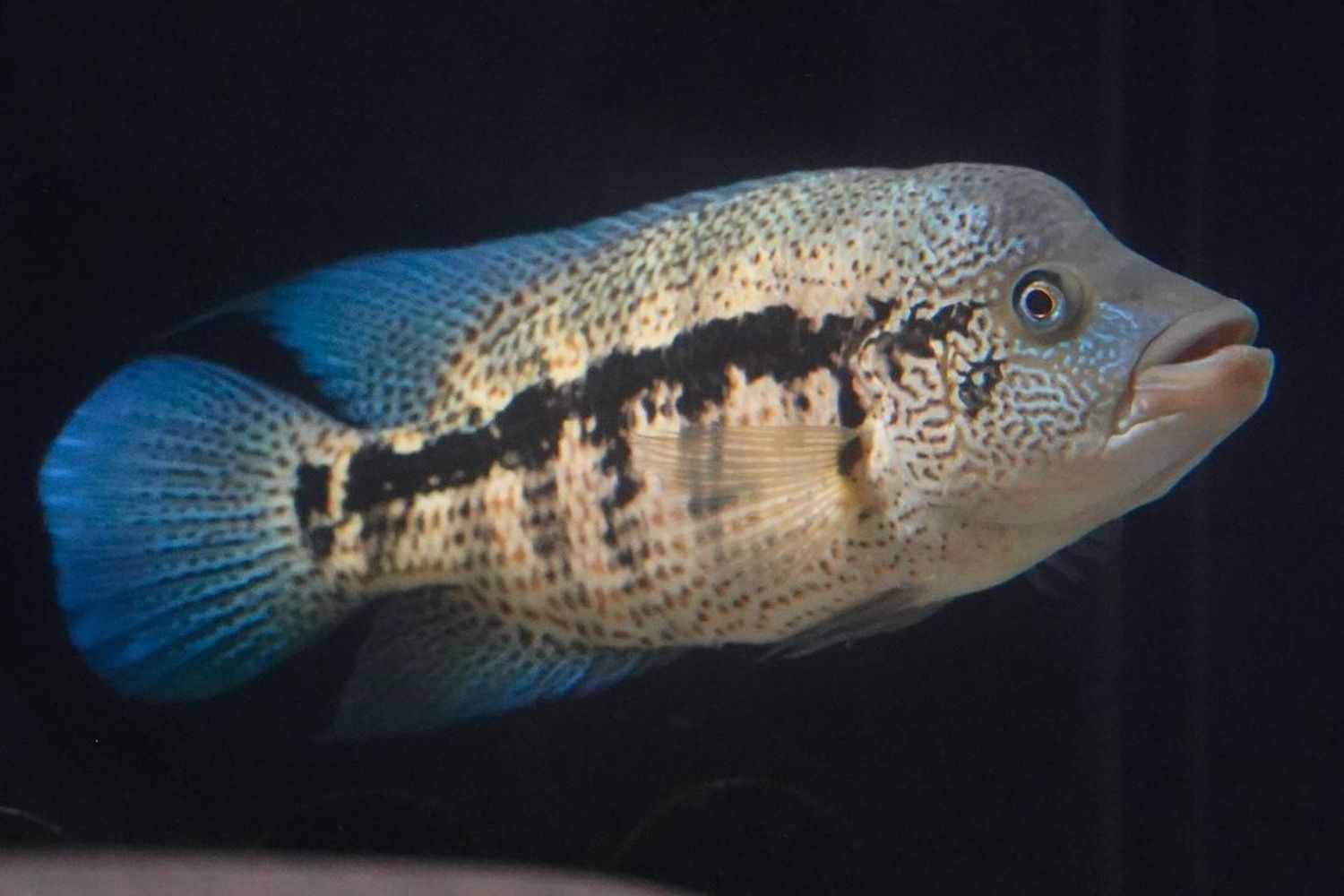One of the most aggressive Cichlids, the Wolf Cichlid (dovii cichlid), is also one of the most popular. This large member of the Cichlasoma genus is a great choice for an aquarist who wants to keep their own pet fish collection.
Caring for the most aggressive cichlid can be a challenge. However, with proper research and knowledge, this difficulty can turn into an amazing hobby. The following care guide will provide you with information on how to care for Wolf Cichlids in your aquarium.
Overview
Wolf Cichlid is also known by its scientific name Parachromis Dovii. It is the largest Cichlid in the world. It is characterized by very aggressive behavior and requires a minimum of 125 gallons of water. They tend to attack other fish. Meanwhile, females tend to hide and are smaller in size. The parental skills are amazing. This fish will take care of their fries better than any other fish.
They eat the pellets and crush them into their mouth, and then release them to feed their fries with the small pieces. It also tends to protect the fries from other fish, which is why it requires space.
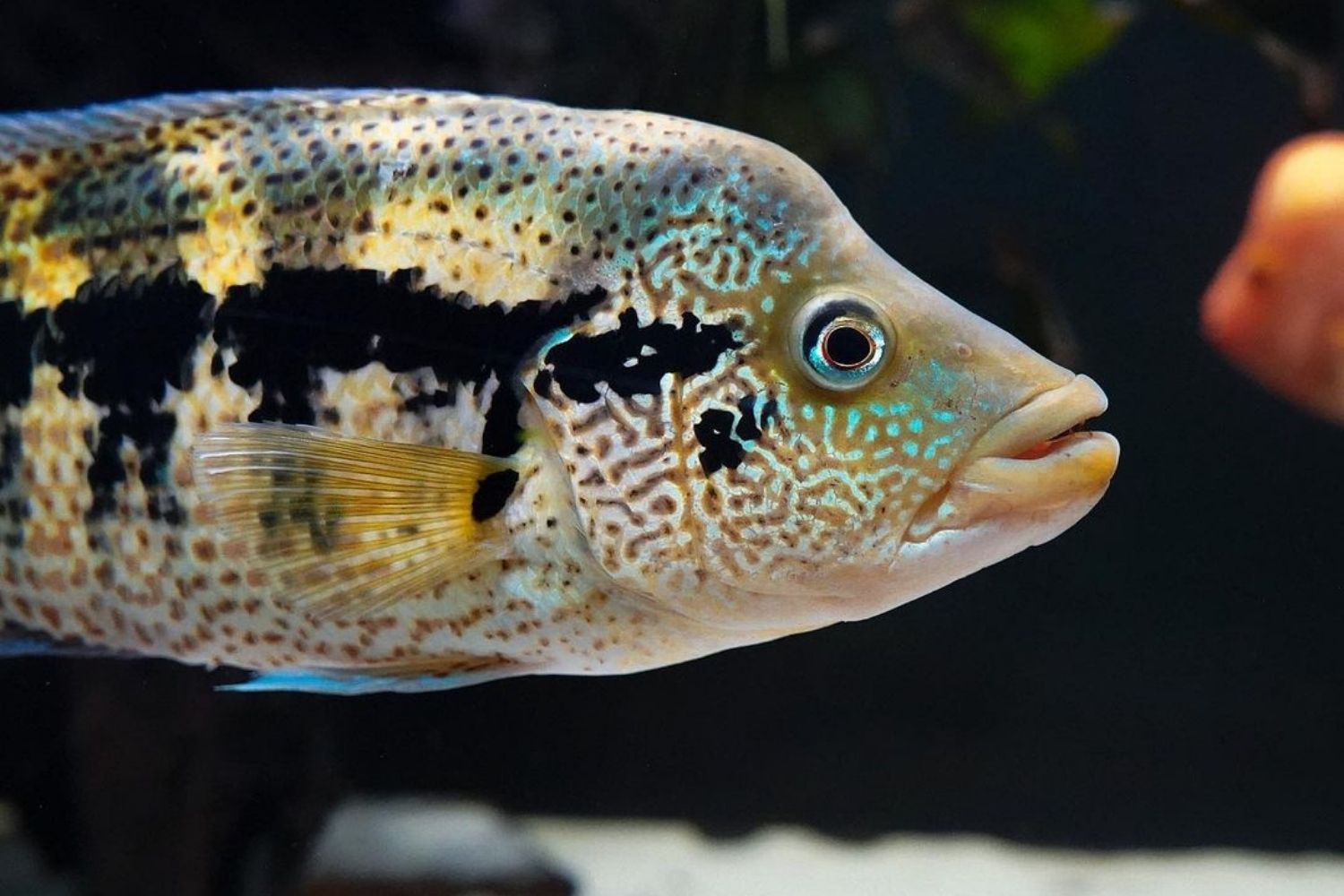
Can you see his amazing colors? Then be careful, because Wolf Cichlid is very aggressive. Photo: rodneysfishtank
The female Wolf Cichlid has a yellow body with black horizontal patches and black dots. The male is larger and stronger, with a grey body instead of the yellow that females have, with a blue reflection in the fins. Depending on the natural habitat, these fish also have red to orange colorations. They also have a well-developed pharyngeal set of teeth located in the throat along with their normal teeth.
| Scientific name | Parachromis Dovii |
| Care difficulty | Intermediate |
| Origin | Central America |
| Size | Up to 28 inches (71.12 cm) |
| Diet type | Carnivore |
| Temperament | Large aggressive- predatory |
| Lifespan | 30 years |
| Temperature | 75.0 to 82.0° F (13.8 – 27.8° C) |
| pH | 6.8 – 7.8 |
| KH | 2 – 10 |
| Minimum tank size | 125 gallons (473 l) |
| Lightning | Moderate – normal lightning |
| Ease of breeding | Moderate |
Behavior & Temperament
Wold Cichlid is a large fish and has aggressive behavior. It tends to attack smaller fish for food since it is a carnivore. When talking about swimming, he is an active swimmer and likes to play around. He has an attitude, is very intelligent, and looks like he’s trained. He’s one of the smartest fish, he studies other fish, and if he notices that they are peaceful fish, he will attack them eventually.
This fish also tends to jump out of the water. It is important to secure your tank by covering it. There are cases where this fish tried to escape and broke the coverage or lid of the tank. Be careful when feeding. He will smash the glass and splash the whole place.
Origin & Habitat
The Wolf Cichlid was firstly described in 1864 by Gunther. This fish is found in Central America like other cichlids. The Atlantic slope is found in the area from Honduras (Aguan River) to Costa Rica (Moin River), and also in the Pacific slope of the same cities from Yeguare River to Bebedero River.
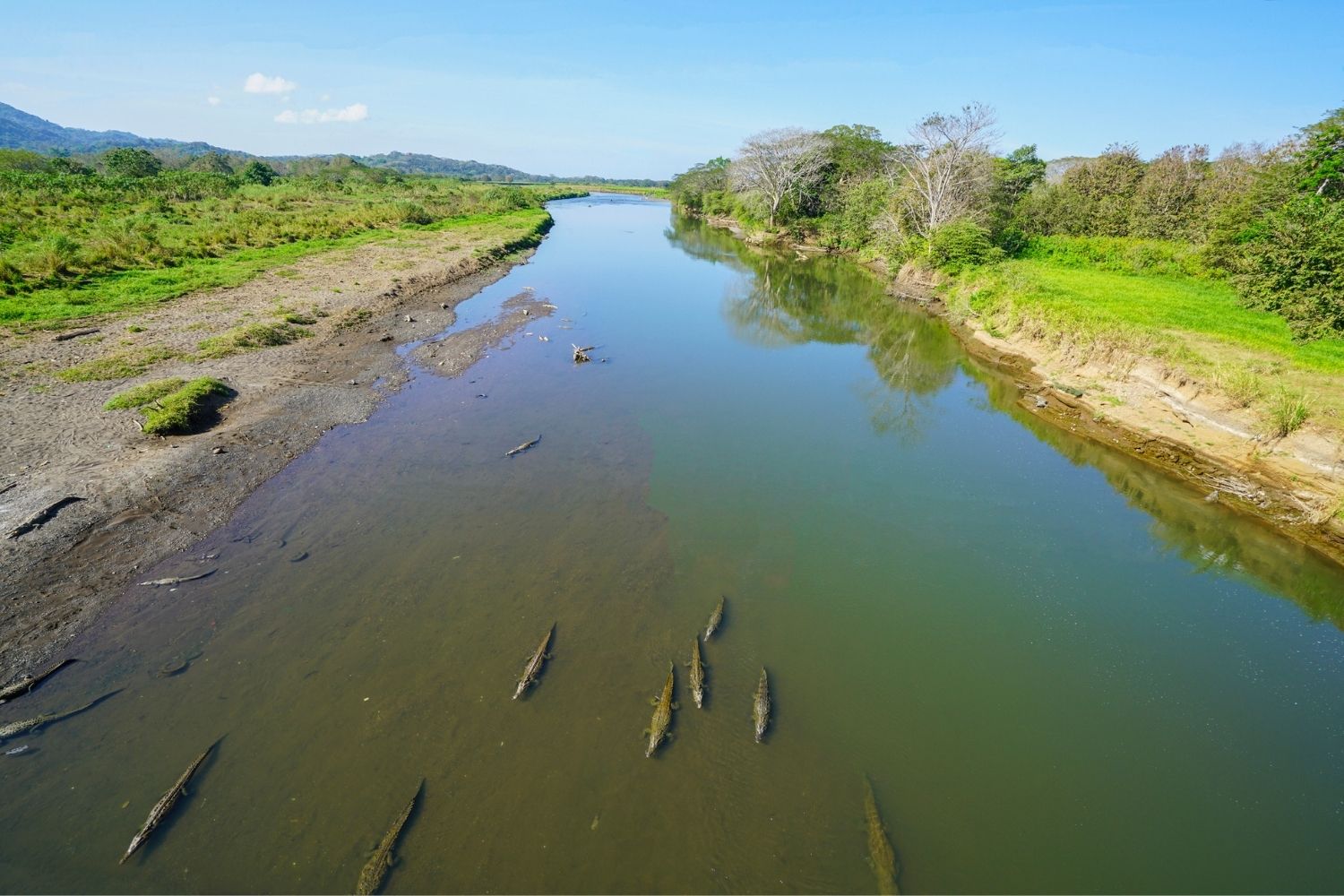
The natural habitat of Wolf Cichlid, Costa Rica Moin River.
They like to dig caverns in their natural habitat. They like to live in lower to middle valley areas and eat primarily fish but also crustaceans and insects. They resemble bass fish in size and, in the wild, are also used by locals for consumption.
Diet & How to Feed Wolf Cichlid
The Wolf Cichlid is a Carnivore and feeds on a wide range of meaty food. The diet of this fish is the same as other large freshwater carnivores, although they like to eat fish, insects, earthworms, crustaceans, and other small invertebrates. Choosing the best Cichlid food increases the immunity system of your Wolf Cichlid, as well as boosts his color.
It is important to feed these fish once to twice a day with the proper amount of food based on their size. You can tell since they will eagerly consume it within 1 or 2 minutes. This is how you can choose the proper amount. This fish is very intelligent, and you will see in its behavior if it has had enough food or not.
Some of the ideal foods which you can feed to it are:
- Large staple pellet
- Stick food
- Crickets
- Worms
- Prawns
- Other small invertebrates
And vary their diet frequently in order to grow healthy.
Care & Tank Requirements
When taking care of the Wolf Cichlid, you should consider that it is not a simple thing to do. You are going to take care of an aggressive fish, and you should pay attention not even to water conditions and tank size but also to the feeding process and try to neutralize their aggressive behavior.
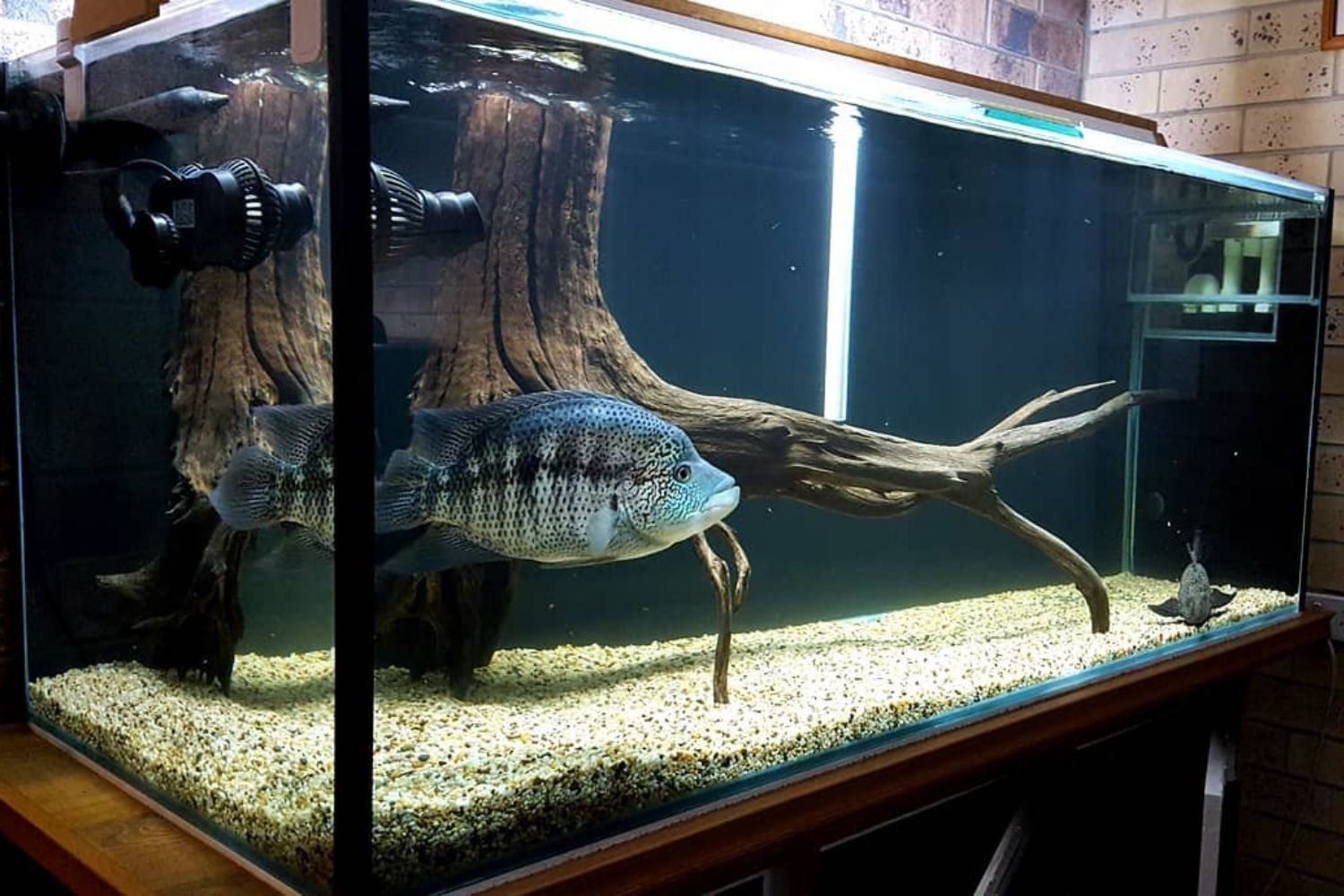
Wolf Cichlid can be kept only in the medium to large tanks.
An important tip is to put a lid or other coverage on your tank since this fish is trying to escape. When feeding, you will get splashed every time. This fish is very intelligent and will know when you’re about to feed it. A moderate to normal lightning will be great for this fish, also a moderate water movement.
The substrate is suggested to be sand or gravel. This fish likes to rearrange the tank often. Other objects are optional, although we don’t recommend using many of them since this fish is very active, likes to attack, and might hurt itself or damage the tank. Here are some objects that you can use:
- Rocks
- Branches
- Driftwood
- Pots
If not sure about it, you can simply keep a bare bottom tank. This will also show the fish. However, the branches would be mandatory if you are planning to breed these fish. During the spawning period, they tend to be aggressive, and the female might need to hide to protect herself from various injuries that are very common. This would also be perfect for the fries to hide. This fish can do a lot of damage compared to other fish.
Tank Size
When setting up your freshwater aquarium for Wolf Cichlid, size is a very important matter for this fish since he is very aggressive and needs space. This fish requires a minimum of 125 gallons of water since it grows very big in size (up to 28 inches). You should move the fish into a new larger one every time it grows. When adults, this fish requires way more space, especially when breeding. 220 to 360 gallons of water would be great.
Water Parameters
The water parameters are also very important when talking about Wolf Cichlid. The temperature should range from 75.0 to 82.0° F (13.8 – 27.8° C), the pH level should be maintained at 6.8 – 7.8, and KH 2 – 10. Special attention should be paid to water filtration. Three large sponge filters and a large canister filter would be great for a pair of these fish. We suggest frequent water changes from 2 to 3 times per week.
Wolf Cichlid Diseases
The Wolf Cichlid is a fish that can be infected by various diseases like any other freshwater fish. You should pay attention to some of them and keep an eye on the fish if he shows several symptoms. If you see anything unusual on the fish, it means you have to take action and take care of it by following some simple steps.
Ich is a common problem. You can tell if the fish tries to scratch itself on the gravel surface or other objects. This disease can be treated by elevating the temperature of the tank for three days up to 86° F (30° C), or simply copper-based medications in order to cure the fish.
This fish is also prone to “hole in the head” disease, which looks like a cavity or holes in the head and face. It is also known as HLLE- Head and Lateral Line Erosion and is caused when meeting poor water conditions. It may also be caused by the lack of nutrition, poor diet and lack of food variety, lack of water changes, and over-filtration with chemicals. In this case, you should immediately improve the water conditions and the diet.
Another problem of this fish is the skin flukes or other parasites, bacterial infections, or fungal infections. It is important to keep an eye on the fish and read about common tank diseases in order to act fast enough and save your fish. This way, your fish will grow healthy.
Breeding
This fish has been previously bred in captivity. Although it is not that easy to breed, you can challenge some difficulty because of the fish’s aggression. If you don’t have a pair of fish, make sure you choose 6 to 8 juveniles in order to form a pair. Simply put them together in the tank, and they will pair naturally.
It is important to keep an eye on the female since it can be stressed by the male attacks and also hurt. Injuries are common in this period. In this case, you should divide the tank and leave enough space only for the fertilization process.
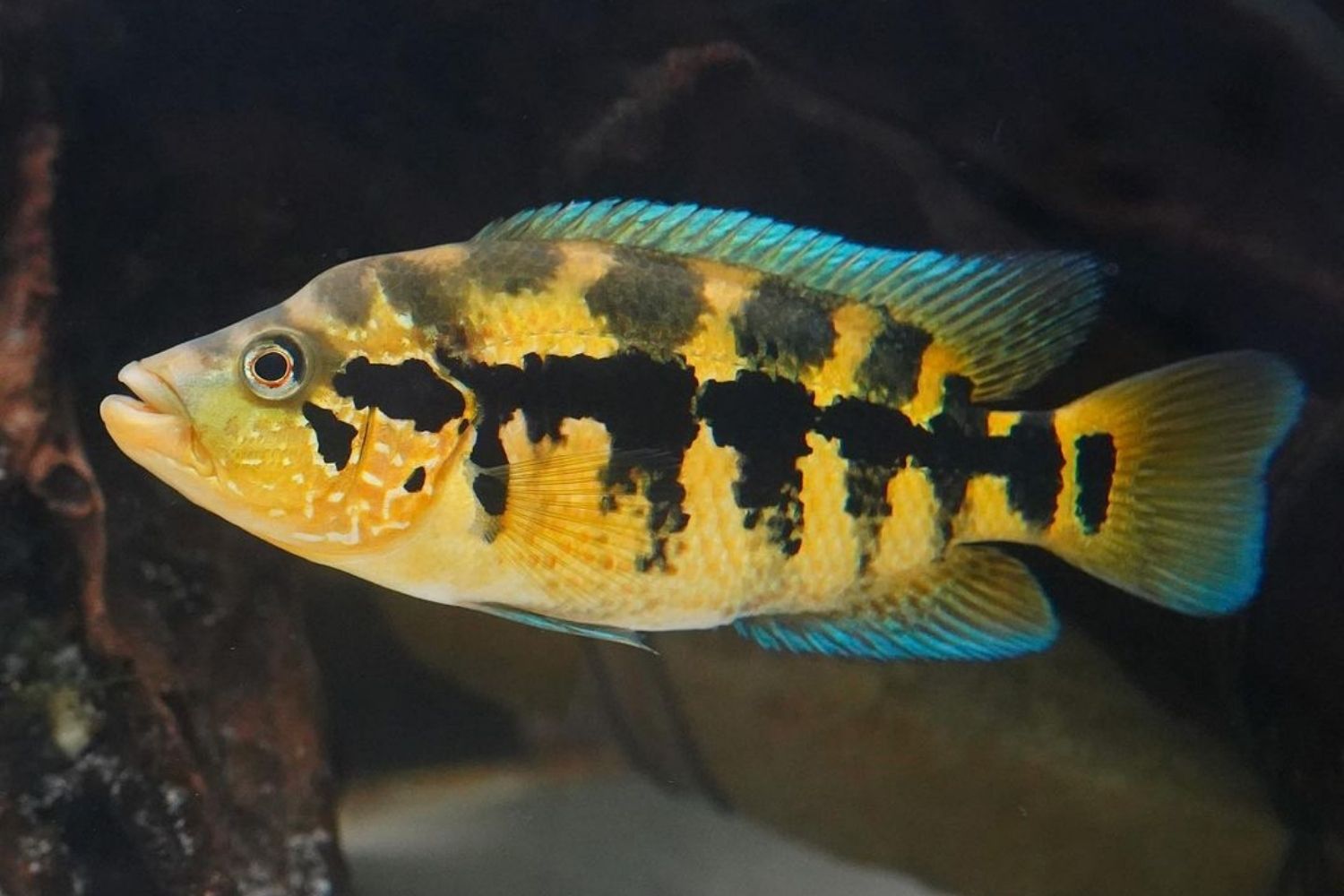
You can notice a female Wolf Cichlid as it has a yellow body with black horizontal patches. Photo: rodneysfishtank
The female lays 1,000 to 2,000 eggs, and it takes about five days for them to hatch. The fries are likely to swim within a few days, and the parents have outstanding parental skills. However, some juveniles tend to eat the fries.
In general, the males also take care of the fries. It is amazing how they crumble the pellets and spit tinny pieces in order to feed the fries. However, you can also feed the fries with baby shrimps and other tinny meaty foods.
The big siblings (juveniles) tend to eat the fries. This is why they should be kept separate. The adults will also eat the juveniles in order to protect the fries. This is why they need a separate tank. It is also important to know that the Wolf Cichlid is sexually mature at 10 to 14 months and can spawn every four weeks.
Tank Mates
The Wolf Cichlid is one of the most aggressive freshwater fish in the world, so it is important to choose its tank mates carefully. Wolf Cichlids are known to attack other fish, and they can even kill them. If you plan on owning a Wolf Cichlid, then keep this in mind when choosing what types of fish to put in your aquarium with it.
Only fish larger and with the same behavior can share the tank with this fish. Although, in a very large tank, with plenty of space and rocks to divide the territory, they can share the tank with:
- A Wolf Cichlid female
- Other large Aggressive predatory fish (monitored)
- Jaguar cichlid is a possibility but under high surveillance
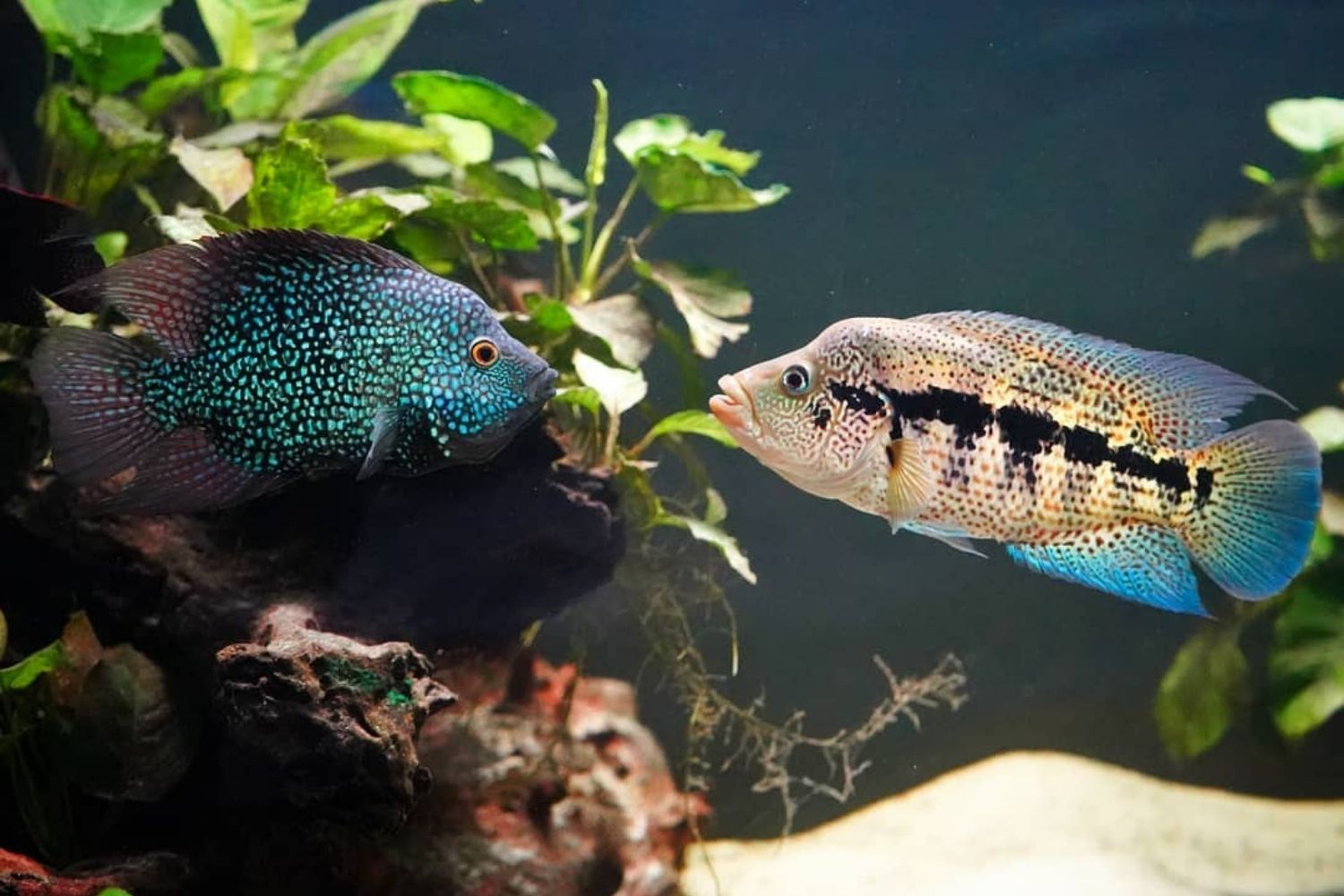
It is possible to keep Wolf Cichlid with other fish like Jaguar Cichlid. Photo: rodneysfishtank
Conclusion: Can You Keep Wolf Cichlid in Your Tank?
Wolf cichlid is a wonderful large fish but not the best choice if you are a beginner. This fish is extremely aggressive and requires some experience, as they may attack you while feeding or maintaining the aquarium. However, this fish can be kept by any cichlid enthusiast, but you should be prepared for the space requirements, the time, and the money spent on this fish since it requires a lot of dedication.
It requires expensive meaty food and large tanks, as we know, are expensive to keep. Anyways, nothing can stop you if you really love this fish. Despite everything, its intelligence and attitude will win your heart.
